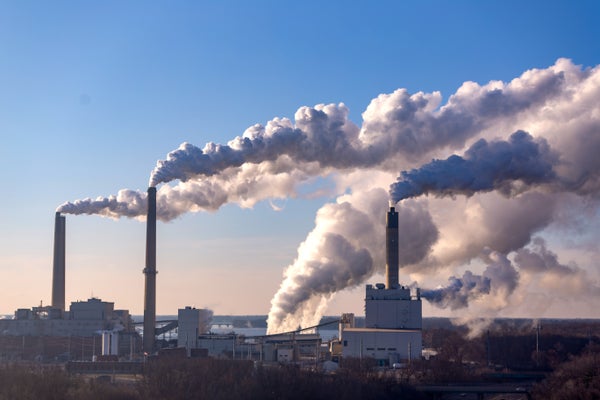CLIMATEWIRE | Global demand for coal, oil and gas may peak before 2030, the International Energy Agency said Tuesday.
The IEA's 2023 World Energy Outlook predicts that the share of fossil fuels in the global energy supply will drop to 73 percent from 80 percent by the end of the decade, based on current energy and climate policies. Energy-related carbon dioxide emissions could also peak by 2025, the report found, but will remain far too high to limit global warming to 1.5 degrees Celsius.
“The transition to clean energy is happening worldwide and it’s unstoppable. It’s not a question of ‘if’, it’s just a matter of ‘how soon’ — and the sooner the better for all of us,” IEA Executive Director Fatih Birol said in a statement. “Governments, companies and investors need to get behind clean energy transitions rather than hindering them."
On supporting science journalism
If you're enjoying this article, consider supporting our award-winning journalism by subscribing. By purchasing a subscription you are helping to ensure the future of impactful stories about the discoveries and ideas shaping our world today.
Clean energy will play a "significantly greater role" in 2030 than today, the IEA found, with almost 10 times as many electric cars on the road and renewables making up nearly half the global electricity mix. Meanwhile, the rate of new fossil fuel infrastructure has slowed, with worldwide additions of coal and natural-gas-fired power plants decreasing by half from earlier peaks, according to the report.
Birol emphasized that a quicker switch to clean energy offers "immense benefits."
“Taking into account the ongoing strains and volatility in traditional energy markets today," he said, "claims that oil and gas represent safe or secure choices for the world’s energy and climate future look weaker than ever.”
The IEA analyzed energy trends in three scenarios: one based on current energy and climate policies, one based on energy and climate targets set by governments and one that meets the goal of reaching net-zero emissions by 2050.
It found that the investment in oil and gas is almost twice the level required in the net-zero emissions scenario. This “signals a clear risk of protracted fossil fuel use that would put the 1.5 °C out of reach,” IEA wrote in the report.
Under the scenario where current policies remain the same, renewables are still set to contribute 80 percent of all new power capacity in 2030, the report said. Solar photovoltaic systems will make up more than half of that new renewable energy supply, with room for growth as manufacturing capabilities also increase worldwide, the IEA said.
In the United States, electric vehicles will make up 50 percent of new car registrations by 2030, according to the report. IEA's 2021 outlook predicted a share of just 12 percent; the agency attributes the jump to Inflation Reduction Act incentives like the $7,500 tax credit for EV consumers.
EV adoption will vary greatly between states, said Loren McDonald, CEO of EVAdoption, which performs data analysis of EVs.
In states where adoption is already high — like California, Oregon and Washington — EVs would likely need to hit 80 percent of new car registrations for the U.S. to achieve the 50 percent threshold. That's because at least 20 other states will adopt EVs far slower, reaching at most 20 percent of new car registrations by 2030, McDonald said in an interview.
“My own forecasts are in that ballpark, right around 50 percent,” McDonald said “It’s certainly possible, if everything falls into place.”
But the IEA report warns that much of the clean energy supply chain is concentrated in a few countries. It's an issue the International Monetary Fund also raised earlier this month, emphasizing that Russia's invasion of Ukraine could jeopardize renewable energy development. Several critical minerals — crucial to electric vehicles and other technologies — come from a handful of countries.
Trade is thus essential to reach net-zero goals and deploy solar energy capacity worldwide, the IEA concluded.
This story also appears in Energywire.
Reprinted from E&E News with permission from POLITICO, LLC. Copyright 2023. E&E News provides essential news for energy and environment professionals.
